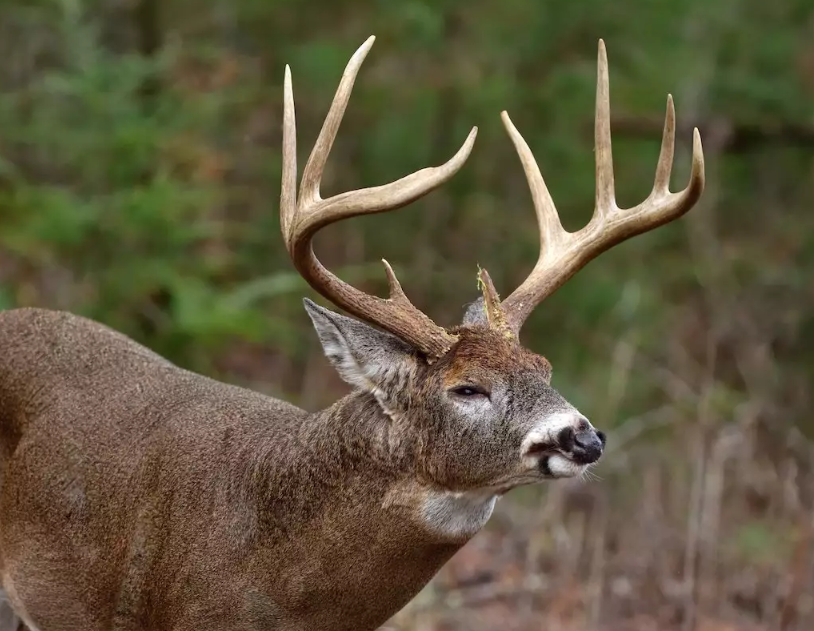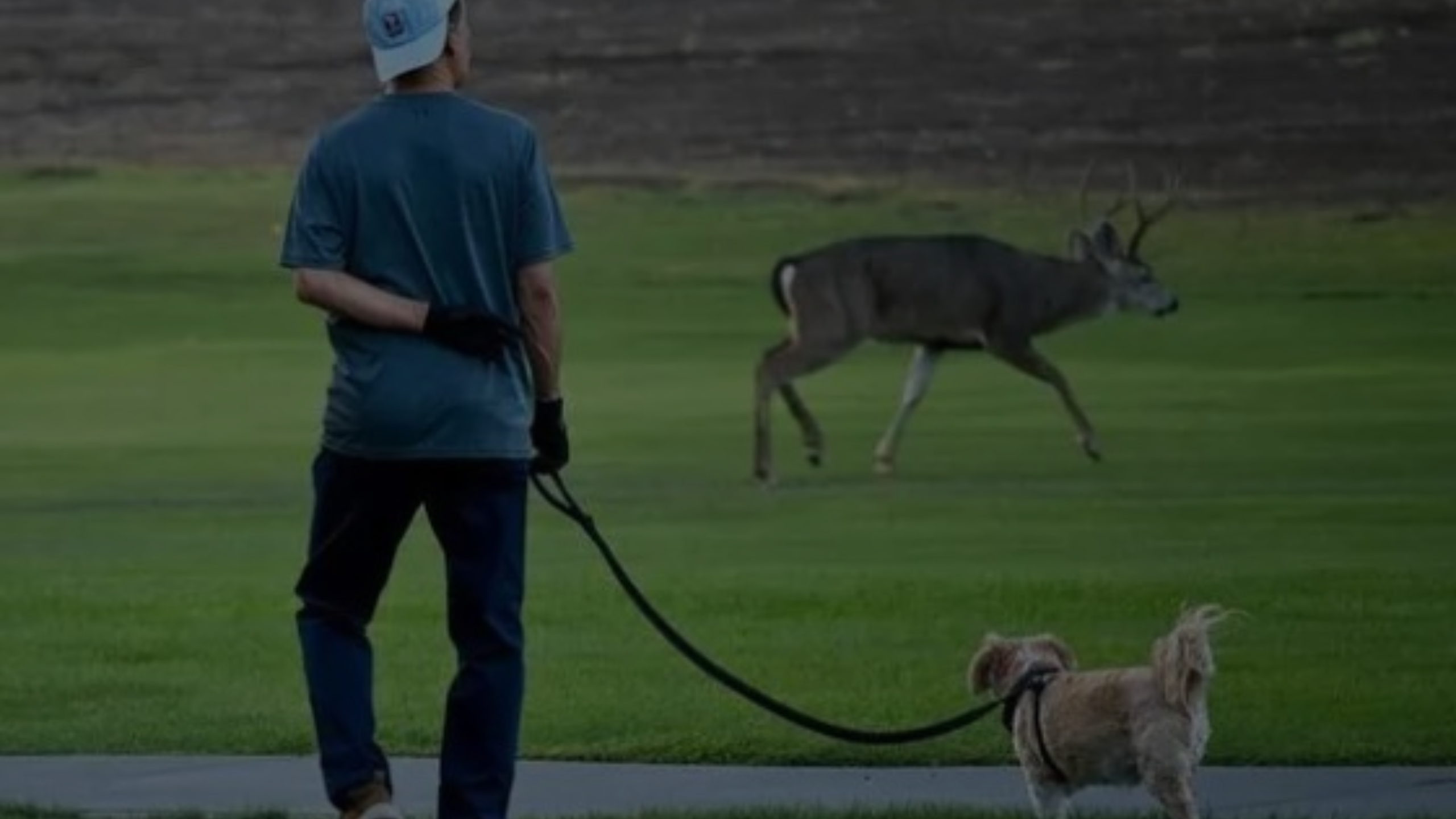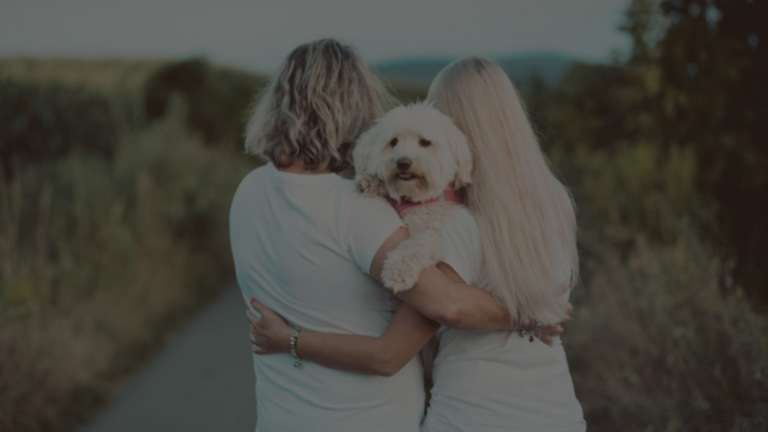It’s not uncommon for pet owners to encounter stray or wild animals while out walking their dogs. While deer generally steer clear of humans, bucks can become aggressive during mating season. Do fawns also tend to be more protective? In rare cases, a deer may perceive a dog as a threat and attack. As alarming as this situation seems, staying calm and taking the right actions can help you and your dog escape safely. So now you might wonder what to do if a deer attacks your dog.
This article offers guidance on protecting your dog if a deer gets aggressive. It provides tips for reading deer behaviors, avoiding confrontations, responding appropriately if attacked, and preventing future issues. Following this advice can help you handle a stressful deer encounter without harm.
Do Deers Attack Dogs?
While generally peaceful, deer can attack dogs rarely to protect their fawns (springtime), during rutting season (males become aggressive), or if they feel cornered in your yard.

However, don’t grab your dog during an attack – let them walk away on their own while you hold the leash to avoid escalating the situation.
Avoiding Confrontations
The best way to stay safe is to avoid confrontations by giving deer a wide berth, especially during spring and fall. Some tips include:
- Keep dogs leashed – Deer may see an unleashed dog as a threat, even if it’s not actively chasing them.
- Watch for fawns – They protect newborns from roughly late May to early July. Don’t approach spotted fawns.
- Stay on trails – Deer feels safest in thick brush and forest. Stick to designated paths to avoid startling a deer in hiding.
- Avoid dawn/dusk – These are high-activity times when deer feed and mate. Remain especially vigilant at twilight.
- Give deer space – If you see a deer, stop and let it leave the area on its terms without pursuing or crowding it.

Being aware of deer habits and avoiding situations where they may feel threatened is the surest way to prevent an altercation from arising in the first place. Simply keeping a respectful distance is usually enough to avoid issues.
Responding to an Attack
Despite preventative measures, confrontations may still occur occasionally. If charged by an aggressive deer, act quickly and calmly:
- Gather your dog – Lift small dogs or call larger ones to your side immediately. Hold them firmly.
- Stand your ground quietly – Do not scream or run, as this can further provoke the deer to chase. Stay still and let it pass without threatening behavior.
- Raise your arms – Wave your arms in a non-threatening manner above your head to appear larger while backing away slowly.
- Create distance – Once past, continue backing away until you feel well clear of the deer. Then, calmly walk in the other direction.
- Seek shelter if needed – If multiple deer are charged or the deer does not back down, seek nearby trees or climb fences for safety until it loses interest.

While severe injuries from deer are rare, do not take unnecessary risks by provoking a defensive animal. Follow these steps and avoid antagonizing it further to escape peacefully. Remove yourself calmly from the situation until tensions diffuse.
After an Attack
Once to safety, assess your dog for any wounds requiring veterinary attention. Some tips after a confrontation:
- Disinfect cuts – Clean superficial cuts with water and an antiseptic like Betadine. Apply antibacterial ointment.
- Watch for fever – Monitor your dog’s temperature in case of internal injuries requiring medical treatment.
- Report attacks – Notify local wildlife authorities that an aggressive deer may be roaming the area.
- Change walking routes – Scout alternate paths or times to avoid that location temporarily until tensions calm.
- Carry deterrents – Consider packing bioacoustics that emits distressed deer sounds or pepper spray as a last resort self-defense measure only if legally permitted in your state.
With care and observation, most minor wounds from hooves or antlers should heal independently. But more extensive lacerations, punctures, or lingering signs of distress demand vet attention. React appropriately based on your dog’s condition.
Preventing Future Issues
To help discourage further confrontations, take preventative steps after an initial incident:
- Avoid scent trails – Pick up all traces of your dog’s urine or feces that may attract a territorial buck back to the attack location.
- Shine flashlights – At night, shine bright flashlights into the dense brush the deer frequents to dissuade it from retaliating.
- Hang alarms – Motion-activated flashing lights or noisemakers can scare off an antagonistic deer from defending its territory.
- Plant barriers – Dense thorny bushes act as natural fences that deer dislike crossing to access your yard or walking paths.
- Use repellents – Sprinkle human hair clippings or special granular repellents containing predator urine to discourage deer from the area.

Being proactive helps discourage individual deer from fixating on your dog as a perceived threat worth attacking again. With some prevention tactics, you can avoid future close calls.
In Summary
While surprising, deer attacks on dogs do unfortunately occur on occasion. Knowing how to defuse tense encounters, responding appropriately if charged, and taking preventative measures afterward can help you and your pet emerge safely. Respecting deer space, monitoring behaviors for signs of distress, and removing yourself calmly from stressful situations is crucial to avoiding harm. Homeowners can coexist peacefully with our local deer populations with care and vigilance.
Resources & References
- https://www.deerassociation.com/information/deer-behavior/
- https://www.michigan.gov/dnr/0,4570,7-350-79136_79236_80001-32575–,00.html
- https://www.humanesociety.org/resources/living-wildlife-white-tailed-deer
- https://www.wildlifeinformed.com/how-to-prevent-deer-damage/
- https://extension.illinois.edu/wildlife/whitetail/description.cfm







